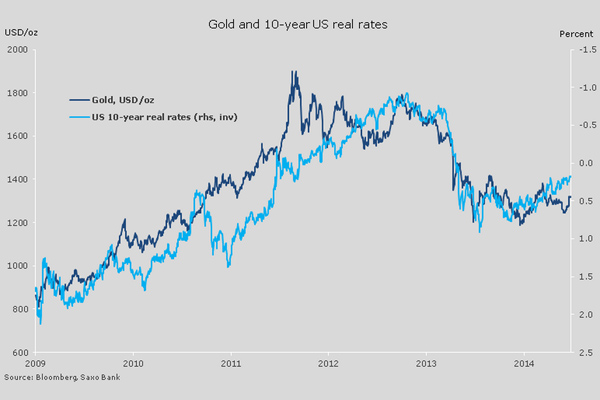
Gold was trading sideways on Wednesday around the $1,310 level, holding onto gains of nearly 9% this year.
This year the price of gold has found some support from safe haven buying thanks to the political crises in Eastern Europe and the Middle-East, but the number one negative factor working against the metal has been expectations of higher market interest rates and rising bond yields in the US.
As the chart shows the relationship between real long-term interest rates in the US (as proxied by 10-year US inflation-linked bonds) and the gold price is strongly negative.
Rising real interest rates raises the opportunity costs of holding gold because the metal provides no yield, and entices investors to rotate into riskier assets like stocks as evidenced by outflows from physical gold-backed ETFs which have continued this year.
Higher rates also boost the value of the dollar which usually move in the opposite direction of the gold price.
But despite consensus forecast by economists of higher rates the expected upward march of bond yields seems to have thoroughly reversed, even as the world’s largest economy continues to recover and the Federal Reserve throttles back monetary stimulus.
On Wednesday benchmark treasuries were testing support at 2.46% from above 3% last year, while adjusted for inflation yield in the US sunk to a meagre 0.22% versus 0.75% at the start of the year.
According to this chart, 0.22% yield on Treasury Inflation Protected Securities or TIPS (which is actually up from a 14-month low hit last week) seems more consistent with a gold price of around $1,400 an ounce versus today’s levels.

Source: Saxo Bank